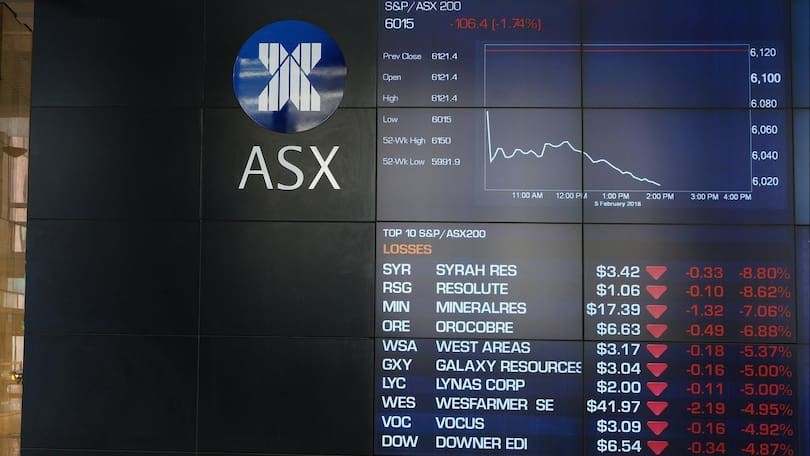The ASX declined 2.2% in trading today, led by a weak showing from Wall St. The selloff is global in nature and primarily led by weak PMI data from the US and Europe. The US ISM manufacturing PMI index came in at 47.8, well below the 50 level that demarcates expansion from contraction. This reading was the worst on record since the GFC and highlights growing cracks in one of the few drivers of global economic growth. With markets approaching all-time highs, this catalyst was adequate to cause a sell-off in stocks. Trump capitalised on the data to argue for more Fed rate cuts, arguing that their decision to keep interest rates at current levels is holding the dollar high and limiting the ability of the United States to compete in the trade war.
Markets have declined substantially today, after a trading session in New York (Credit: The West Australian)
Asian markets also declined, following North Korea’s decision to fire a ballistic missile that is believed to have come from a submarine, as part of a test. The country is in working level talks with the United States, but the decision signals a potential escalation of tensions in the region.
Another reason for Aussie markets being dragged down is poor new car sales data, indicating weakness in the Australian economy specifically. Since automotive sales are a good indication of broader economic activity, it indicates that the RBA’s interest rate cuts are not feeding through to the underling economy as quickly as some commentators hoped. While monetary policy typically has a 12-18-month time lag before it’s effects fully flow through to the rest of the economy, it is likely that the current stimulus is flowing mainly to the housing market. House prices are up substantially across Australia, but the underlying economic data, particularly in unemployment, looks fairly lacklustre, which indicates that most people would prefer to invest than spend.
Disclaimer:
This article has been prepared by the Australian Stock Report Pty Ltd (AFSL: 301 682. ABN: 94 106 863 978)
(“ASR”). ASR is part of Amalgamated Australian Investment Group Limited (AAIG) (ABN: 81 140 208 288 Level 13, 130 Pitt Street, Sydney NSW 2000).
This article is provided for informational purpose only and does not purport to contain all matters relevant to any particular investment or financial instrument. Any market commentary in this communication is not intended to constitute “research” as defined by applicable regulations. Whilst information published on or accessed via this website is believed to be reliable, as far as permitted by law we make no representations as to its ongoing availability, accuracy or completeness. Any quotes or prices used herein are current at the time of preparation. This document and its contents are proprietary information and products of our firm and may not be reproduced or otherwise disseminated in whole or in part without our written consent unless required to by judicial or administrative proceeding. The ultimate decision to proceed with any transaction rests solely with you. We are not acting as your advisor in relation to any information contained herein. Any projections are estimates only and may not be realised in the future.
ASR has no position in any of the stocks mentioned.


















